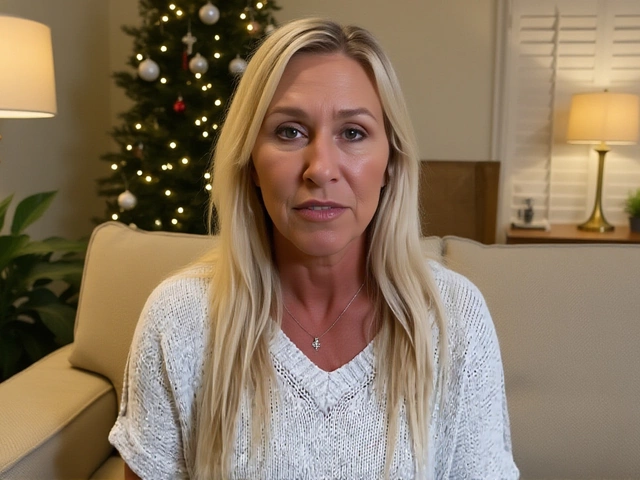What we know so far
A tense campus lockdown at the U.S. Naval Academy ended with a midshipman shot by a Navy security officer on Thursday evening after a false report of an active shooter triggered door-to-door clearing operations in Bancroft Hall. The midshipman survived and was listed in stable condition at the University of Maryland Shock Trauma Center.
The lockdown began around 5:07 p.m., when the Naval Academy and Naval Support Activities Annapolis ordered students and staff to shelter in place following reports of suspicious activity. Within minutes, Navy security forces and local police pushed onto the grounds and into Bancroft Hall, the massive residence hall at the heart of the Yard.
What they found inside was confusion—not an active shooter. According to officials and sources familiar with the response, a rumor spread among midshipmen that a gunman disguised as a police officer was moving through the dorm. That single detail changed how some students interpreted everything that followed. When officers began room-by-room checks, one midshipman—convinced the person at the door might be the attacker—struck a responding officer with a training weapon. The officer fired, hitting the student in the shoulder.
Maryland State Police launched a medevac helicopter and flew the student to Shock Trauma in Baltimore. Maryland Congresswoman Sarah Elfreth said the midshipman was in stable condition, calling the young men and women at the Academy “our best and brightest” who deserve to feel safe on campus. The Governor’s office added there was no credible threat to the Academy. Navy officials reinforced the same point: there was no active shooter.
Outside Bancroft Hall, Annapolis residents watched police lights strobe across King George Street as sirens echoed over the Severn River. Parents texted furiously. Students huddled in locked rooms. The sense of danger felt real because it was real—to people who believed an armed attacker was inside. The fact that it started with bad information makes the outcome feel even tougher to swallow.
Bancroft Hall is central to daily life at the Academy and houses a large share of the Brigade. It is also a complex building with long corridors, stairwells, and countless rooms—hard to clear quickly, even for trained teams. On a normal day, its scale is a point of pride. In a lockdown, that scale becomes a tactical challenge.
Officials have not released the identity of the midshipman or the officer. They have not said how many shots were fired. As is standard in any law-enforcement-involved shooting, a formal review is expected to examine the use of force, the communications that preceded it, and the sequence of decisions made inside the building.
Why the misinformation mattered
This incident turned when a specific rumor took hold: a shooter dressed as police. In any emergency, responders count on people recognizing them as help—uniforms, shouts of “police,” and the way tactics look when teams sweep through a building. The disguise rumor flipped that script. To some students, the very signs that usually bring relief—uniforms, badges, weapons, flashlights—suddenly looked like the threat.
The training weapon adds another layer. Midshipmen handle inert, non-firing tools for drills—often solid-plastic or rubber replicas used for practice. In a low-light, high-adrenaline clearing operation, those can be hard to distinguish at a glance. If an officer is struck, even by a nonlethal object, the situation can escalate in a heartbeat.
Law enforcement responses to possible active shooters follow a predictable pattern: lock down the area, stop the threat if one exists, and then clear the building room by room. Officers often move fast, issue loud commands, and keep weapons ready. That can look aggressive to someone behind a locked door, especially if they believe an attacker might be impersonating police. The paradox is painful: the faster the response, the more likely it is to collide with fear-driven actions by people inside.
False alarms and hoaxes have primed campuses across the country to expect the worst. In recent years, schools and colleges have dealt with waves of phony threats—sometimes called “swatting”—that force massive responses and emotional fallout without a real gunman. Federal agencies have warned that bad actors exploit the chaos these calls create. Thursday’s scare at the Academy shows how even an organic, student-to-student rumor can have the same effect if it spreads unchecked in a crisis.
There are practical fixes that don’t require new laws or gear. Clear, rapid, authoritative messaging matters—down to the wording used in push alerts and public address systems. If commanders can quickly say what responders look like, how they will identify themselves, and what sheltering people should do when officers reach their door, it chips away at the space where rumors flourish.
The Academy and Annapolis authorities are likely to review several questions in the days ahead: How did the initial report of “suspicious activity” take shape? Through which channels did the “disguised as police” rumor jump between rooms and floors? What identification steps did officers use at each doorway? Were there moments where updated messages could have corrected the narrative in real time?
Those reviews usually lead to after-action changes—tweaks to radio protocols, adjustments to the wording of campus alerts, and updates to how officers and building occupants interact during clears. Sometimes it’s as basic as a standardized knock-and-announce script or a pre-set checklist campus leaders send to every phone five minutes into a lockdown.
Support for the Brigade will be part of the immediate response, too. Lockdowns and close calls leave a mark, even when no one is killed. Expect counseling options, command briefings, and a push to keep routines intact as classes and training resume. The message from senior leaders will likely track with what elected officials said Thursday night: there was no active shooter—but the fear felt real, and it deserves to be addressed.
For the Annapolis community, the sight of cruisers and tactical gear around the Yard is unsettling, but not unfamiliar. The Academy sits right inside a living city, and that proximity means police activity is visible in a way it isn’t on many bases. When rumors spill into public view, they ripple across neighborhoods, schools, and downtown shops within minutes.
One delicate point remains: identification. Officers in a dynamic search can’t always slow down, but small cues help—visible patches, simple verbal codes brought up over loudspeakers, or having a designated officer trail the lead element to handle communications at doorways. On the other side of the threshold, students benefit from clear instructions: stay visible, keep hands empty, and follow commands the first time. None of that solves every risk. It lowers the chance of the exact scenario that unfolded Thursday.
The shooting will now move from crisis to paperwork. Investigators will map the hallway, log the weapon used by the officer, collect statements from team members, and interview the midshipman when doctors clear it. Timelines will be built down to the minute. Communications—texts, group chats, radio traffic—will be pulled to reconstruct how the rumor moved. The goal is not to assign public blame on day one, but to figure out where the information chain faltered.
Officials have not said when a public report might be released. In similar cases on military installations, a command-level review can take weeks. If policy changes follow, they usually show up in updated guidance for drills, lockouts, and building-clearing procedures.
What we can say with certainty is narrow but important. There was no active shooter. A midshipman was shot after striking an officer during a building clear sparked by a false report. The student was evacuated by helicopter and is stable. The community reacted quickly and in good faith to information that turned out to be wrong. The systems worked in parts and failed in others. The next steps are about closing those gaps so a rumor doesn’t become the most dangerous thing on campus again.




